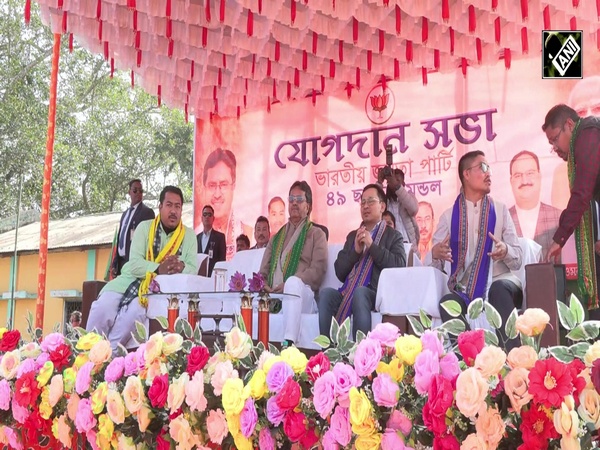Gyalpo Losar comes as signal for Nepali Sherpa to prepare for new expedition season
Feb 23, 2023

By Binod Prasad Adhikari
Kathmandu [Nepal], February 24 : It is the last day of the fortnightly celebration of the Gyalpo Losar festival for the indigenous Sherpa Community, the aboriginals of the High Himalayas known for their expertise in ascending the sky-notching mountains.
Sherpa residing in Kathmandu on Thursday gathered at monasteries performing rituals and cultural performances praying for success and blessing from Mother Nature. Soon after the celebration, many of the celebrating Sherpa will be back on the mountain slopes assisting climbers in making their summit attempt a success.
"This (Gyalpo Losar) is the beginning of a new year. After Losar, the expedition season starts, before setting off for it we have to pray and worship at Gumba following the culture. Then after we set off for the base camp and prepare everything there. Before moving up to the high camps we also perform the rituals there to appease the God. Upon getting the signal to go up we climb the mountain and it would grant us success," Phurba Sherpa, a member of the mountain climbing Sherpa community also known as the guides of the Himalayas told ANI.
The celebration of Gyalp Losar follows the Tibetan calendar which is also called as the Tibetan New Year and is celebrated for two weeks. During this time the people sing, dance and eat special foods and attend special ceremonies at the Gompa, or monastery. The main festival is celebrated in the first three days.
On the first day, they clean the house and share a special beverage called Changkol. Changkol is derived from Chhaang or Tibetan beer. When the clock strikes midnight, the traditional greeting of "Tashi Delek," meaning "blessings and good luck," is shared and friends and family stay up late to welcome the New Year. In the morning, many Sherpa changes out the Dhoja, or prayer flags, symbolizing the fresh start of the New Year.
The term Losar is derived from two words Lo, meaning year and Sar, the word for new. Losar is celebrated in Nepal mostly by the Sherpa, Tibetan, Tamang, Bhutia and Yolmo people.
According to ancient lore, Losar was first celebrated when an old woman named Belma introduced the measurement of time based on the phases of the moon. In ancient times, people went to the local spring to perform rituals of gratitude. Offerings were made to the Nagas, or water spirits, who activated the water element in the area, and smoke offerings were made to the local spirits associated with the natural world.
These rituals took place for an entire month leading up to New Year's Day. The Sherpa community of Nepal is mainly dependent on mountaineering and expeditions. They've been assigned to fix the ropes to the summit which officially opens the summit window to climbing enthusiasts.
For being stronger in high altitudes, Sherpa is well-suited for alpine-style expeditions on the Himalayas. Climbers mainly need them to carry oxygen, and the gears and as safety on the summit path. They are highly recognized as elite mountaineers and experts in high-altitude adventures.
The mountaineering-dependent community since 2020 had to face a heavy crunch as the COVID-19 pandemic kept mountaineers off the mountains. A celebration like that of Thursday was also muted due to the contagion but it is back in a gap of two years and has made heroes of the mountains more resilient and strong.
"Due to COVID-19, we had to undergo treacherous situations as well as the world. But this year being able to return back to celebrate the Losar and we have been praying that the same situation never comes again. We have been organizing this kind of ritual for the well-being of the nature and world," Pemba Sherpa said.


















